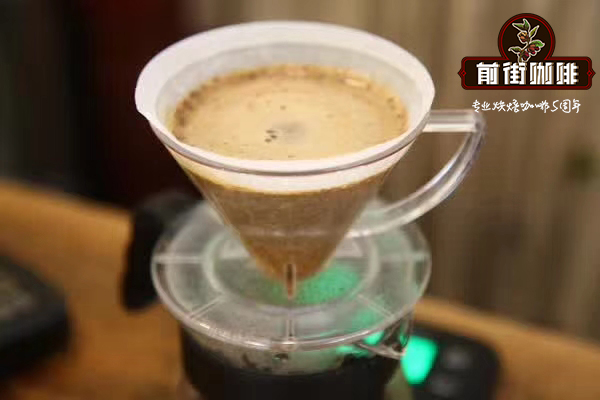Analysis of espresso extraction: why there is water in the powder bowl after coffee extraction

Professional coffee knowledge exchange more coffee bean information please follow the coffee workshop (Wechat official account cafe_style)
It takes water to make espresso. The water is soaked through the coffee from top to bottom: before dripping onto the coffee powder, the water passes through the boiler, the head and the water distribution net. As soon as you start the pump, the water will fill the gap between the coffee powder and the water net, and then flow into and soak the coffee powder.
At this stage, water is everywhere: above, in and under the coffee powder. When you turn off the pump, a valve in the coffee machine opens to relieve pressure. Water does not compress under pressure, so there is not too much water leaking out at this time, just staying on the coffee powder and in the coffee powder. After there is no pressure, there is no force to push the water out of the powder bowl, and there is no force to push the water up to the head. The water just got stuck in the powder bowl.
If you remove the cooking handle quickly after the extraction, you will find a pool of water slowly seeping down into the coffee powder. After a few seconds, the coffee powder absorbed all the water.
The larger the gap between the coffee powder and the water distribution network, the more water will remain. And the more water you have left, the wetter and waterier your pressed powder will be.
Compared with other powder bowls, VST powder bowls are deeper. The advantage of this is that it makes the coffee powder less likely to reach the water distribution network after absorbing water and expanding. If the coffee powder is topped to the water distribution network, the extraction uniformity will become worse. There should be a gap between the coffee powder and the water distribution network to allow the water to seep evenly. Wet pressed powder is always much better than uneven extraction.
This situation is usually caused by insufficient powder filling, but it may also be due to the lack of freshness of coffee beans. Generally speaking, the coffee pressed powder expands a little after it comes into contact with hot water. If it is caught properly, the extraction will expand close to the water distribution network; when the extraction is stopped, the coffee machine will be able to absorb the excess water back, so that the pressed powder is not too wet and muddy. When the amount of coffee powder is insufficient, or the freshness of coffee beans is insufficient, the degree of expansion in the extraction process will not be enough, and the residual water will be produced. Although you have done the action of smoothing, it does not necessarily mean that your powder cup is suitable for this; if you have seen the specifications of foreign coffee powder cups, which are also used to make double espresso, there are 14g, 15g, 16g and 17g different portions; smoothing does not necessarily mean filling enough powder, but even if there is residual water left, it does not mean that it is wrong to fill powder.
Important Notice :
前街咖啡 FrontStreet Coffee has moved to new addredd:
FrontStreet Coffee Address: 315,Donghua East Road,GuangZhou
Tel:020 38364473
- Prev

Espresso extraction: what is coffee extraction for 8 seconds? can coffee powder be extracted twice?
Professional coffee knowledge exchange more coffee bean information Please pay attention to Coffee Workshop (Wechat official account cafe_style) "Time" is the last part of the Espresso extraction strategy, usually calculated in "seconds", when the pump starts, the clock ends, and the time consumed is the "extraction time". In any Espresso extraction strategy,
- Next

Discussion on espresso: why the coffee grounds in the powder bowl can't be knocked out
For more information on coffee beans, please follow the coffee workshop (official Wechat account cafe_style). Put a dose of coffee powder, ranging from 14g to 22g, in a clean powder bowl with filter handle. The specific amount of use depends on the capacity (different size) of the powder bowl and the amount and concentration of coffee you want to make. If there is too much loading, the filter handle cannot be fixed.
Related
- Beginners will see the "Coffee pull flower" guide!
- What is the difference between ice blog purified milk and ordinary milk coffee?
- Why is the Philippines the largest producer of crops in Liberia?
- For coffee extraction, should the fine powder be retained?
- How does extracted espresso fill pressed powder? How much strength does it take to press the powder?
- How to make jasmine cold extract coffee? Is the jasmine + latte good?
- Will this little toy really make the coffee taste better? How does Lily Drip affect coffee extraction?
- Will the action of slapping the filter cup also affect coffee extraction?
- What's the difference between powder-to-water ratio and powder-to-liquid ratio?
- What is the Ethiopian local species? What does it have to do with Heirloom native species?

